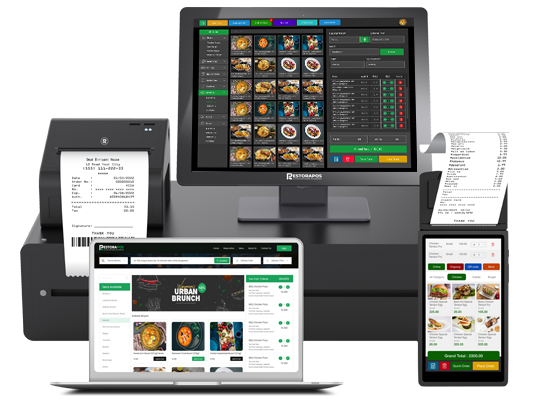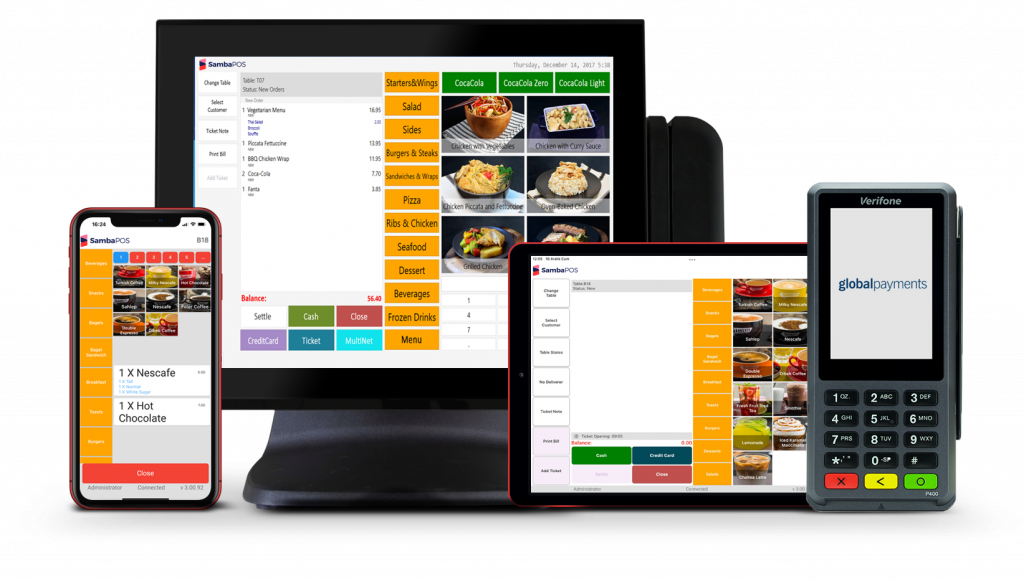Restaurant POS Software platforms vs. traditional systems: Which wins?
Wiki Article
Exactly How POS System Functions: A Comprehensive Guide for Entrepreneur
A POS system offers as an important tool for modern-day companies, integrating different parts to streamline operations. It encompasses hardware like barcode scanners and software program for sales tracking. This system not only processes deals but also manages supply and analyzes client habits. Understanding its functionality can substantially affect a company's efficiency and decision-making. What are the crucial elements that add to this performance? Exploring these parts provides important understandings.Recognizing the Elements of a POS System
A Factor of Sale (POS) system is composed of several essential parts that work with each other to help with transactions and take care of business procedures. At its core, the equipment includes gadgets such as a cash register, barcode scanner, invoice printer, and payment terminal, all important for processing sales (Restaurant POS Software). The software application part takes care of stock, sales monitoring, and client information, supplying useful insights for business decisions.Additionally, databases store deal records and consumer information, making certain information integrity and protection. Network connection makes it possible for real-time updates and access to cloud-based services, improving operational performance. Interface, made for convenience of usage, permit staff to navigate the system swiftly, decreasing training time. Together, these elements develop a natural system that enhances the sales procedure, improves client service, and aids in effective management of service resources. Recognizing these parts is essential for company owner looking for to enhance their POS systemsHow Sales Purchases Are Processed
When a customer makes a decision to make an acquisition, the sales deal launches a series of organized actions within the POS system. The cashier inputs the products being bought, which are checked through a barcode visitor or by hand entered. This activity obtains product details, consisting of pricing and appropriate tax obligations, from the system's database.Next, the consumer is provided with the overall amount due. The POS system after that refines the settlement, whether via cash money, credit score card, or mobile settlement approaches. For electronic settlements, the POS safely interacts with payment cpus to authorize and verify the transaction.Once the settlement is validated, the system produces a receipt, which can be published or sent out digitally. This receipt offers as receipt for the consumer. The transaction information is tape-recorded in the system, ensuring accurate sales documents and monetary monitoring for the organization.Inventory Administration and Tracking
Effective inventory administration and tracking are important parts of a POS system, as they ensure that businesses keep perfect stock levels and decrease discrepancies. A durable POS system permits real-time stock updates, mirroring sales and returns instantaneously. This makes it possible for local business owner to keep an eye on stock degrees precisely, ensuring that prominent things are easily offered while preventing overstocking of less preferred products.Additionally, progressed POS systems supply functions such as computerized stock signals and reorder pointers, enhancing the purchase procedure. Barcoding and RFID technology improve precision in tracking supply movement, decreasing human error. Comprehensive reporting tools provide insights right into supply turn over prices, assisting services make educated choices regarding purchasing and item offerings. Eventually, reliable inventory management via a POS system not only improves operational efficiency however likewise improves client satisfaction by guaranteeing item availability.
Evaluating Consumer Data and Insights
Client information analysis works as an effective device for businesses using a POS system. By collecting and checking out transaction data, organizations can discover valuable insights concerning client habits and choices. This analysis enables them to determine acquiring patterns, peak buying times, and popular products, thereby informing inventory choices and advertising strategies.Additionally, businesses can segment their customer base, permitting personalized marketing initiatives that satisfy certain demographics or buying behaviors. Comprehending customer loyalty patterns also assists in establishing targeted promos and incentives programs.The information obtained from a POS system can also disclose understandings into consumer responses, making it possible for companies to make educated decisions concerning product offerings and solution renovations. Inevitably, leveraging customer data successfully can improve the general purchasing experience, foster consumer satisfaction, and drive profits growth.
Benefits of Implementing a POS System
Applying a POS system supplies countless benefits that can significantly improve company operations. To begin with, it improves deal procedures, minimizing delay times and boosting customer satisfaction. By automating sales procedures, companies can minimize human mistake and warranty precise record-keeping. Furthermore, a POS system supplies useful information analytics, making it possible for proprietors to track sales fads and inventory levels in real-time. This understanding supports educated decision-making, helping to enhance stock monitoring and advertising strategies.Moreover, her comment is here many POS systems incorporate with other organization tools, such as accountancy software program, simplifying monetary management. Improved employee administration functions, such as tracking hours and performance, further add to functional efficiency.Lastly, the application of a POS system can cause increased income with boosted client experiences and tactical insights, ultimately fostering organization development and sustainability.
Frequently Asked Questions
What Kinds Of Services Can Take Advantage Of a POS System?

Exactly how Much Does a POS System Normally Expense?
The expense of a POS system usually varies from a couple of hundred to numerous thousand dollars, depending upon features, equipment, and software program - Restaurant POS Software. Companies should think about recurring fees for upkeep, support, and purchase processing when budgeting
Can I Integrate a POS System With Existing Software?
go to this web-site Incorporating a POS system with existing software application is frequently viable. Several systems use APIs or built-in compatibility attributes, allowing businesses to enhance procedures and enhance performance by connecting numerous software application applications effectively.What Training Is Required for Staff to Use a POS System?
Full Article Training for team to make use of a POS system usually includes understanding software functionalities, refining transactions, managing stock, and managing consumer interactions - Restaurant POS Software. Practical presentations and hands-on practice improve effectiveness and self-confidence being used the system properlyWhat Takes place if the Net Decreases While Utilizing a POS System?
If the web decreases during POS system use, transactions might be disrupted. Lots of systems use offline capabilities, permitting fundamental procedures to continue, but full functionality, consisting of real-time inventory updates, will be restricted.Report this wiki page